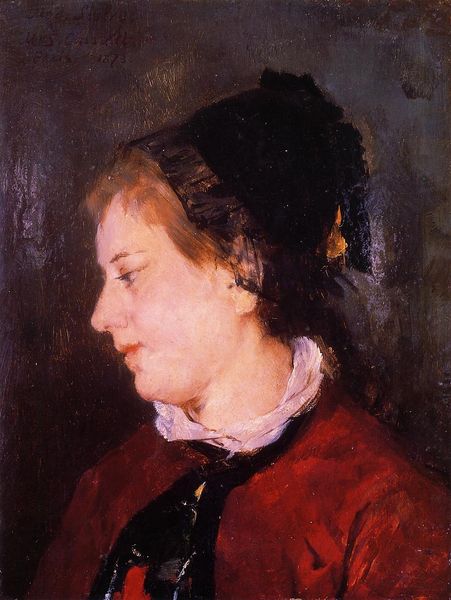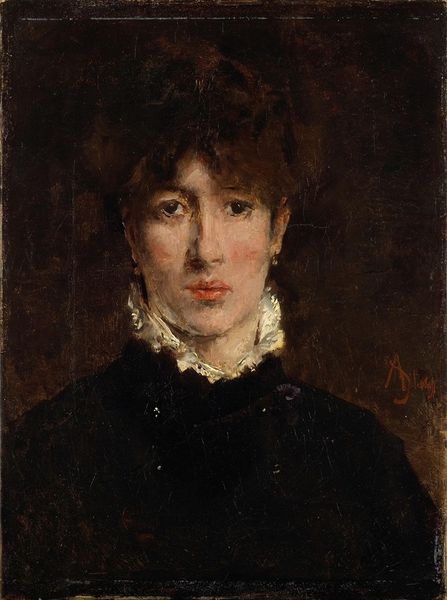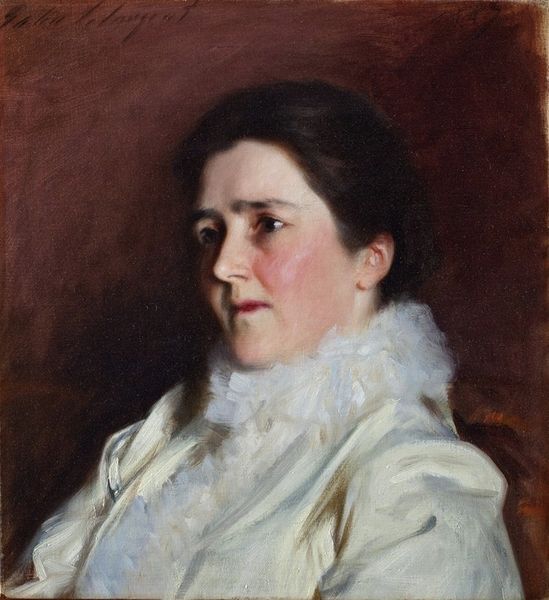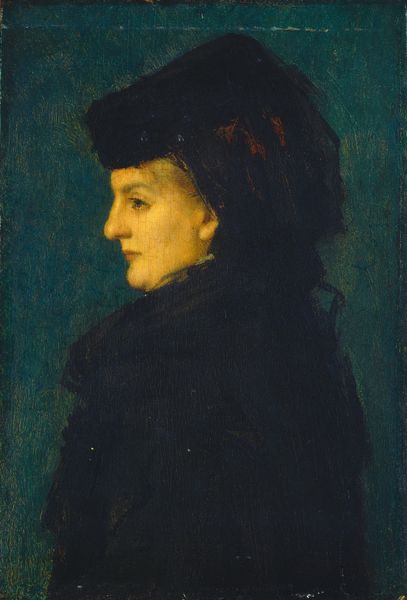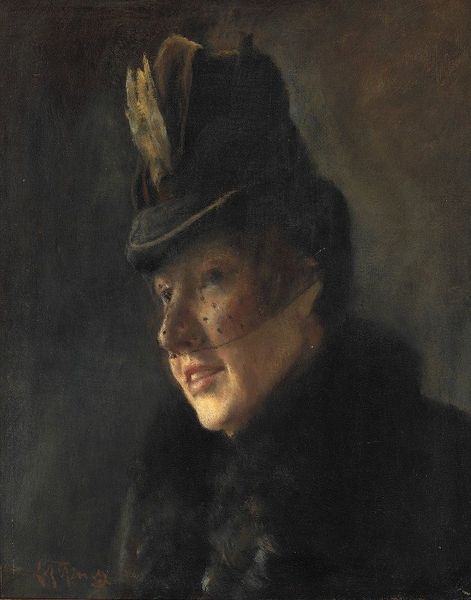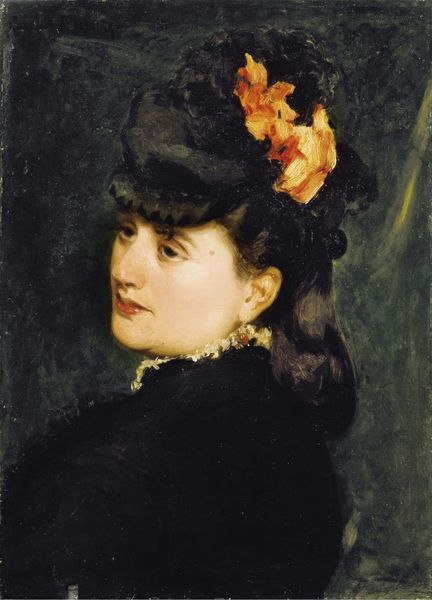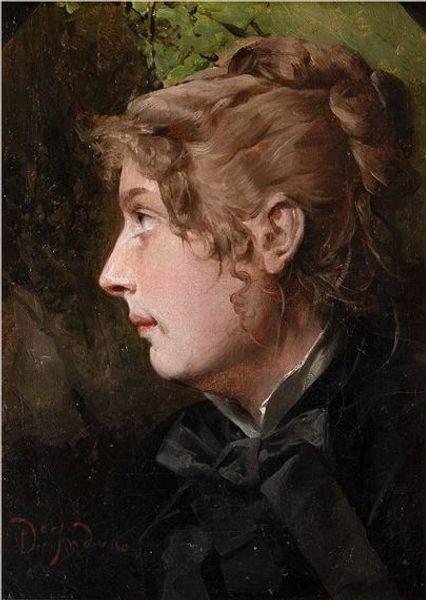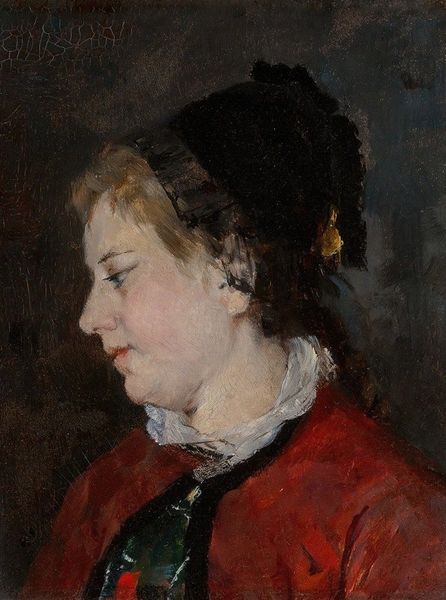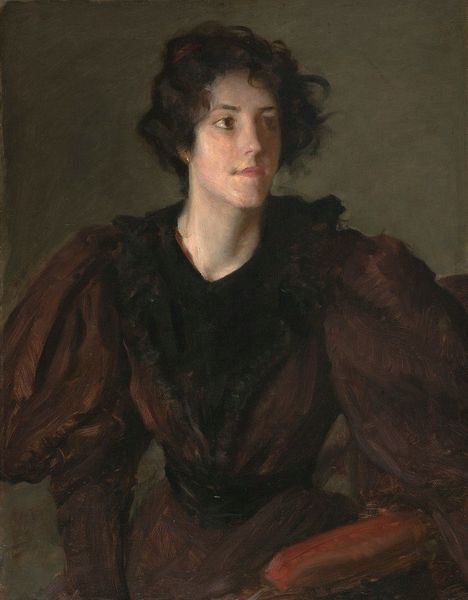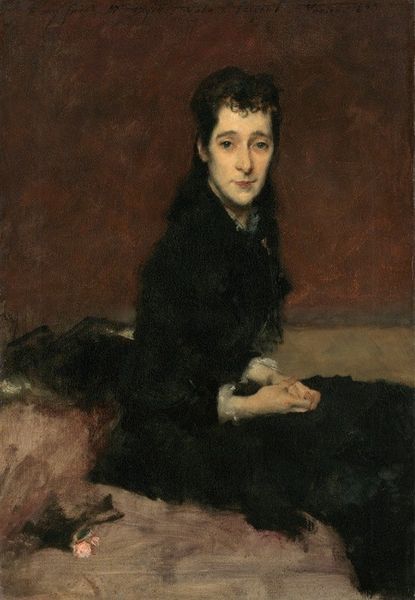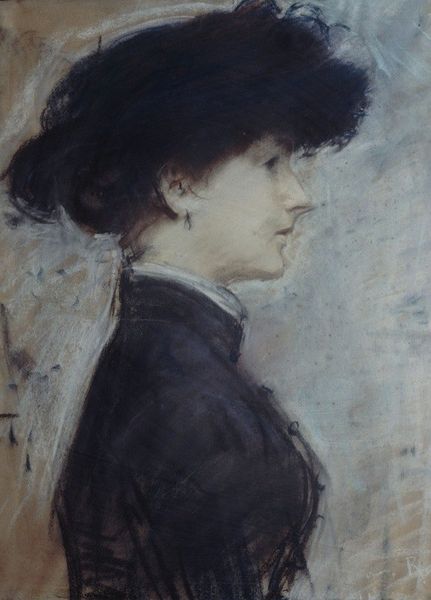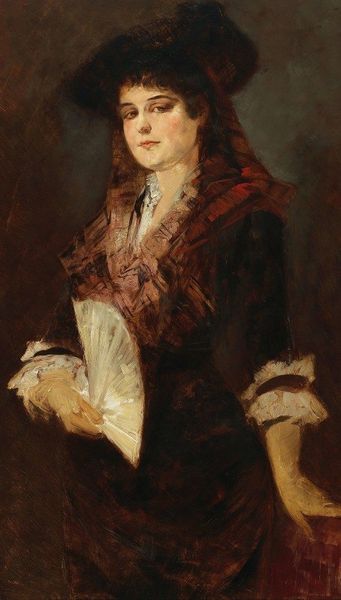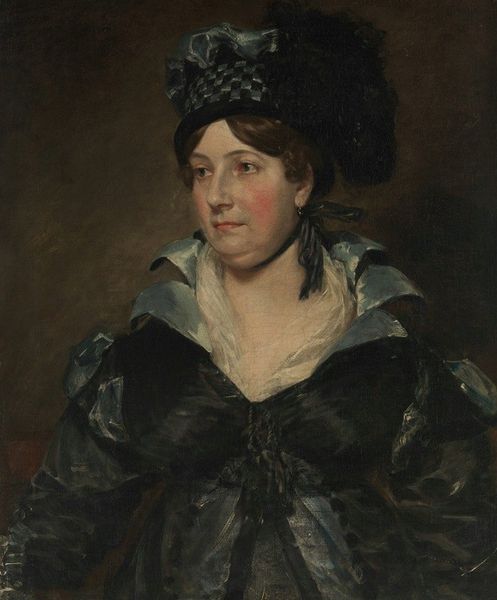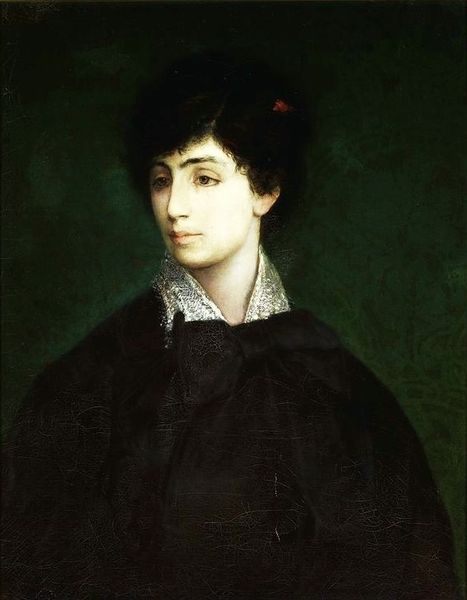
oil-paint
#
portrait
#
impressionism
#
oil-paint
#
figuration
#
oil painting
Copyright: Public domain
Editor: Here we have Paul Gauguin’s “Portrait of Ingeborg Thaulow” from 1877, rendered in oil paint. It’s quite a dark and muted work; I am curious to hear what stands out to you. Curator: Well, focusing on the material aspect, consider the labor involved in creating oil paint in 1877. Pigments would've been painstakingly ground and mixed with oil. How might that intensive process shape our understanding of the value placed on this portrait? Editor: That’s an interesting point. So, thinking about labor... the ruffled collar seems particularly detailed for such an early Impressionistic work. Does that signify anything? Curator: Indeed! That tactile, almost handcrafted detail draws our attention to the contrast between the subject’s social standing, evident in the clothing, and the broader social shifts during the rise of industrial capitalism. Is Gauguin commenting on the subject, the materials, or the labour of portraiture itself? Editor: It makes me wonder if the roughness in the brushstrokes serves to underscore that tension - the friction between craft and mechanisation? Curator: Exactly! And look at the thick impasto around her face and neck compared to the flatter handling of the background. What does this difference in the material handling suggest about Gauguin’s priorities or the perceived importance of the sitter in this work? Editor: Perhaps a deliberate choice to foreground the individual while the background alludes to her environment without overwhelming? I suppose I was initially drawn in by her distant look, yet, it is even more thought-provoking to discuss the nuances between the artwork's textures. Curator: Absolutely. Gauguin gives clues to material concerns within even a seemingly straightforward society portrait.
Comments
No comments
Be the first to comment and join the conversation on the ultimate creative platform.
